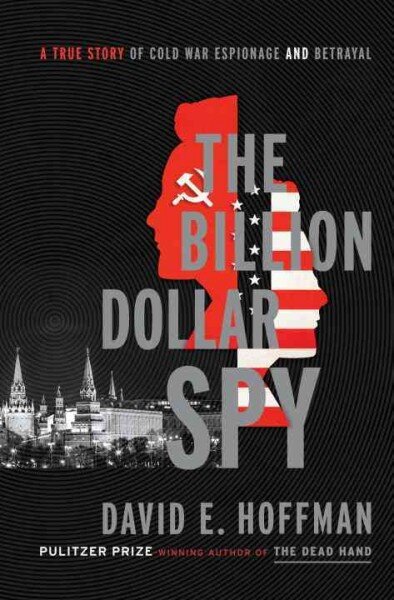
I wonder if the current, or future generations will understand the Cold War - it sounds so "clean" and "odd" - the world divided into "good" and "bad", "us" and "them", paranoia and propaganda on both sides.
"The Billion Dollar Spy" brings some of that back. I remember tidbits - I recall a MIG landing in Japan during the '70s, which is a background event in the book.
"The Billion Dollar Spy" covers a few key intelligence successes the CIA had during the Cold War. The main spy was a high ranking Soviet scientist, with access to key Cold War secrets (primarily the radar capabilities of the Air Force and the Air Defense System), but willing to pull secrets from other domains as well.
The spy ran a long-term intelligence operation - photographing documents in the thousands over a number of years. The "Billion" refers to a very conservative estimate of the amount of money saved by U.S. defence planners by being able to avoid divergent pathways when planning offensive and defensive tactics against the U.S.S.R.
Knowing the weakness of downward facing radar meant the U.S. could work hard on the development of the cruise missile, which skimmed low to the ground and was invisible to the Soviet air defense, with little concern that it could be stopped. Knowing the radar on the high-end fighters kept the U.S. out front with technology, and the confidence that they would win war battles (which they did easily in the Gulf against former Soviet satellites armed with MIGs).
The book does a good job of understanding what it felt like to be in Russia at that time - the disillusionment over the promises made when the Communist state was taking over, the secondary status of U.S.S.R. citizens compared to U.S., the loss of dissidents simply for speaking against the current regime (even though they would have been loyal to the country, they betrayed the party).
This betrayal led to the leaking of secrets, fully knowing that these were hurting the military might of the country, and would likely end badly for the spy himself.
Spycraft (e.g. overcoming and discovering surveillance, dead drops, hand-offs etc.) feature prominently. I was amused that the CIA set up dummies in cars, so they could race around a corner, the passenger jumps (falls) out of the car and the dummy is put in the passenger seat, just a few yards ahead of a following KGB patrol. The technology of the time is shown through the use of cameras - some take good pictures, but are too big to haul around, smaller cameras, easier to hide, took poor pictures unless the lighting was precisely correct.
This is a good book to read - recommended.
No comments:
Post a Comment